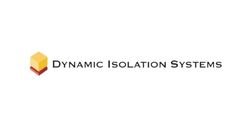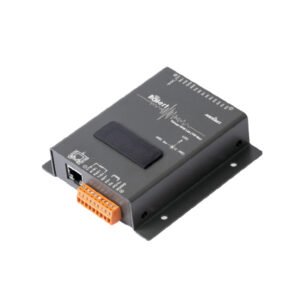Total: $2.500,00


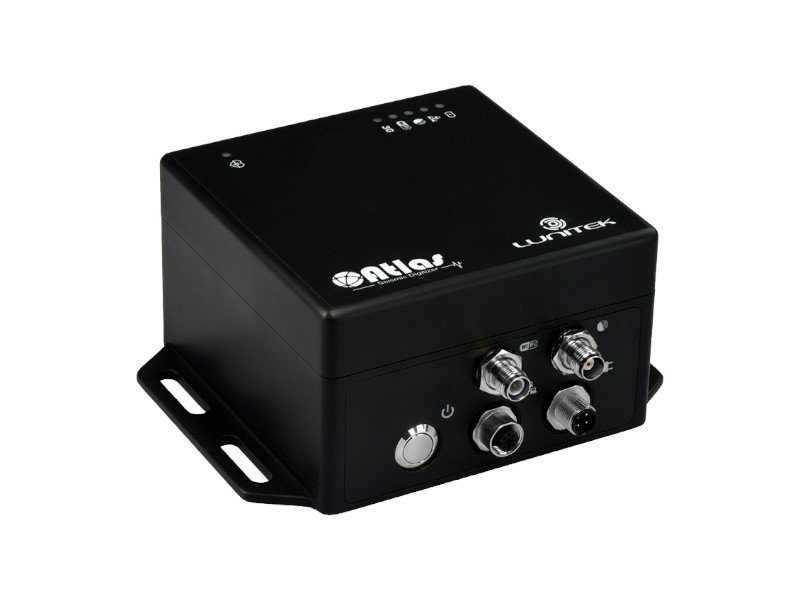
A high-performance, stand-alone seismic monitoring system with 32-bit ADCs, 136dB dynamic range, GNSS synchronization, and MiniSEED format. Featuring LAN, Wi-Fi, optional 4G modem, and 33-hour UPS backup, it supports real-time structural health and earthquake monitoring with compatibility for Seiscomp3, Earthworm, Geopsy, and Seisgram2k.
$4.279,00 – $6.995,00Price range: $4.279,00 through $6.995,00
The ATLAS is a high-performance digital recorder designed for structural and seismic monitoring, offering robust, stand-alone operation with continuous, high-resolution data recording. Featuring advanced 32-bit delta-sigma ADCs, high dynamic range, and network connectivity, ATLAS is ideal for earthquake monitoring, structural health analysis, and industrial seismic applications.













With high-resolution data acquisition, seamless network integration, and autonomous power backup, ATLAS is the ultimate solution for seismic and structural monitoring.
Specifications and features are subject to change without prior notice.
| Weight | N/A |
|---|---|
| Dimensions | N/A |
| TYPE | ATLAS 3 CH, ATLAS 6 CH, ATLAS 9 CH |
ATLAS is designed to suit various applications and provide a solution to the users needs in the field.
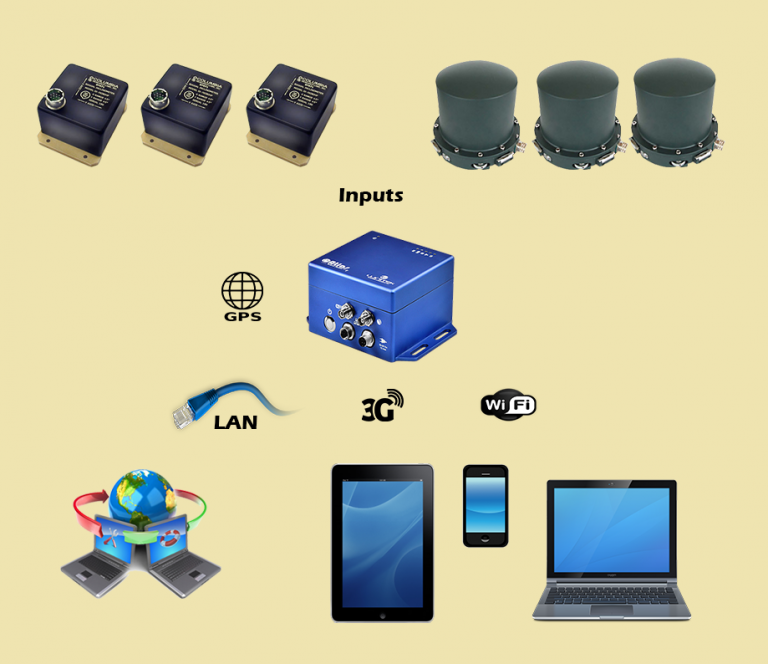
ATLAS can be used with an accelerometric or a velocimetric sensor.
ATLAS can be configured in-situ using WIFI or LAN cable.
If ATLAS is used for permanent monitoring, it can be reached remotely using the built-in HSPA modem or using LAN connection in order to link it, for example, to an ADSL modem.
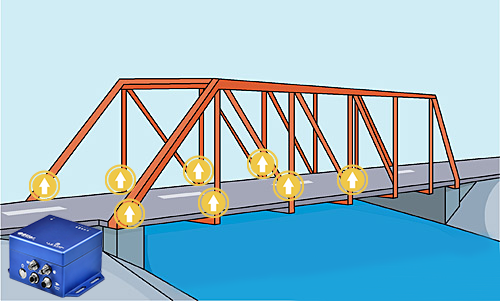
ATLAS is well suited to the monitoring of large structures where multiple sensor information is required.
In such applications sensors are wired up to ATLAS and with each device you can acquire up to 9 synchronous channels.
If more channels are needed, connection to an other ATLAS device and synchronization with the MASTER is possible. ATLAS can be reached locally via WiFi or remotely using the buit-in HSPA modem or by LAN.
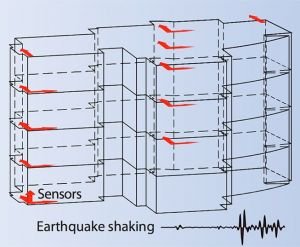
ATLAS is often used in the filed of structural monitoring for calculating the specific resonant frequency of the buildings.
Lunitek has developed ad-hoc firmware based on FFT for real time evaluation of the building’s state of health.
 STRUCTURAL MONITORING
STRUCTURAL MONITORINGMonitoring station
In a typical geophysical monitoring station atlas is used with a low noise force balance triaxial accelerometer and with a triaxial velocimeter both mounted on a concrete slab.
Both sensors are digitized with high dynamics, high accuracy ADC.
ATLAS can be equipped with auxiliary analog inputs in order to monitor enviromental data (temperature or humidity) or with digital input to monitor external events (vault open/closed) or even with output driving capability to comunicate exceeding thresholds (alarms).
You can have ATLAS configured according your needs
![]() 2.4Ghz comunication radio module.
2.4Ghz comunication radio module.
Thanks to the SoftAP function you can download data and configure your ATLAS directly from your device (mobile, tablet, notebook), moreover you can create a network of completly wireless Lunitek devices.
![]() HSPA comunication radio module.
HSPA comunication radio module.
Insert a standard sim card inside you ATLAS and you can reach it remotely using a VPN.
![]() ATLAS is available with standard input impendance (40KΩ) or with high input impendance option (1.8MΩ)
ATLAS is available with standard input impendance (40KΩ) or with high input impendance option (1.8MΩ)
![]() ATLAS is available with 3, 6 or 9 input channels. Inputs are located on military connectors.
ATLAS is available with 3, 6 or 9 input channels. Inputs are located on military connectors.
![]() You can have ATLAS with auxiliary low speed analog/digital inputs.
You can have ATLAS with auxiliary low speed analog/digital inputs.
Thanks to this option you can integrate sensor data with external environmental information (temperature, humidity) or you can be notified when the containing vault is open. Relay output to control alarms comes as an option.
![]() ATLAS is compatible with many third part sensors through the MCO option.
ATLAS is compatible with many third part sensors through the MCO option.
This option allows the instrument to fully interface with the sensors which needs for example the mass centering.
![]() You can have your ATLAS with a professional protective case.
You can have your ATLAS with a professional protective case.
ATLAS models available
| Inputs | Differential |
| Channels | 3 low noise 24bit |
| Dynamic Range | >136dB@100Sps |
| Sampling Rate | 10,100,200,250,500,1000 Sps |
| Sampling Topology | Synchronous |
| Data Format | MiniSeed or Proprietary |
| Trigger | STA/LTA |
| Timing | Built-in GNSS receiver |
| Timestamp | Encapsulated in data |
| LAN | 10/100 ethernet port |
| WiFi | Optional built-in |
| Cellular Modem | Optional built-in |
| Power Supply | 9-28 Volt DC – power consumption < 2W |
| Back up Battery | Internal LiPo |
| System Autonomy w/o external supply | 33 hours |
| Configuration | Web Interface |
| Compatibility | Earthworm,Antelope,Geopsy,SeiscomP and SeisGram2K |
| Weight | 2Kg |
| IP protection | IP68 |
| Temperature Range | -40°C to +70°C |
Answer: Yes, ATLAS may do both tasks in parallel. For event-triggering, threshold exceedance instead of STA/LTA is recommended for accelerometers.
Answer: The telemetry works through SeedLINK protocol, which holds data in its ring buffer whose size is by default 1GB (expandable): it corresponds to some days of continuous recording. When the telemetry goes down, the client may request data from the last packet received before the break and then recovered all the missing data. This is automatically handled by the SeedLINK client. Whether the telemetry is up or down, the device always stores data in a separate folder and the telemetry (SeedLINK) server detects it, and copies data in its ring buffer, ready to be sent on request.
Answer: This could be done in two ways. For example, if the 2 or more ATLAS digitizers are in the same LAN segment, either ATLAS could reach the trigger status and trigger all the other units with a broadcast message. If they are installed in different LAN segments (for example there is a gateway in the middle), this won’t work and we should install an additional module on a Linux machine that catches the alarms from the devices and implements a trigger voting algorithm.
Answer: MiniSEED, just like the continuous recording. But if we install the QUAKELOGIC Event Watchdog software to the remote server, the trigger files may be sent automatically to a remote server and exported in ASCII format, or the server may extract the event data from the continuous recording and perform the export. For example, this would be the best way to interact with a LABVIEW application.
Answer: The ATLAS digitizer can communicate with the remote server (Linux Machine) through MQTT and SeedLINK. The Linux Machine takes care of storing all the continuous recordings from the ATLAS devices and receives the trigger data through MQTT or just extracts it from the continuous buffer. At this point, data is still available in MiniSEED. Once we have a time window for an event, we may export it in ASCII.
Answer: The ATLAS digitizer can be powered by a 12 V solar panel (>100 W). The system requires a solar panel, 12V backup battery and controller unit. QuakeLogic can provide all these auxiliary hardware including on-site installation.

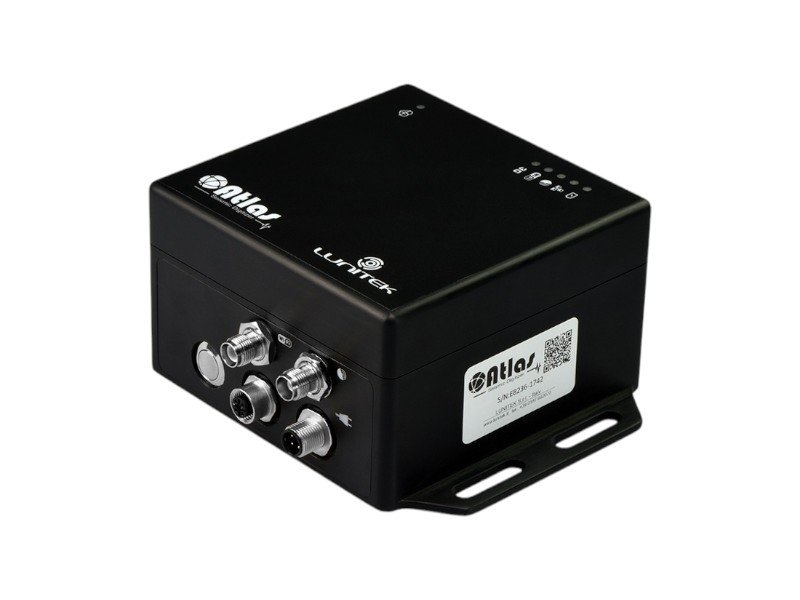


The ATLAS is a high-performance digital recorder designed for structural and seismic monitoring, offering robust, stand-alone operation with continuous, high-resolution data recording. Featuring advanced 32-bit delta-sigma ADCs, high dynamic range, and network connectivity, ATLAS is ideal for earthquake monitoring, structural health analysis, and industrial seismic applications.













With high-resolution data acquisition, seamless network integration, and autonomous power backup, ATLAS is the ultimate solution for seismic and structural monitoring.
Specifications and features are subject to change without prior notice.
| Weight | N/A |
|---|---|
| Dimensions | N/A |
| TYPE | ATLAS 3 CH, ATLAS 6 CH, ATLAS 9 CH |
ATLAS is designed to suit various applications and provide a solution to the users needs in the field.

ATLAS can be used with an accelerometric or a velocimetric sensor.
ATLAS can be configured in-situ using WIFI or LAN cable.
If ATLAS is used for permanent monitoring, it can be reached remotely using the built-in HSPA modem or using LAN connection in order to link it, for example, to an ADSL modem.

ATLAS is well suited to the monitoring of large structures where multiple sensor information is required.
In such applications sensors are wired up to ATLAS and with each device you can acquire up to 9 synchronous channels.
If more channels are needed, connection to an other ATLAS device and synchronization with the MASTER is possible. ATLAS can be reached locally via WiFi or remotely using the buit-in HSPA modem or by LAN.

ATLAS is often used in the filed of structural monitoring for calculating the specific resonant frequency of the buildings.
Lunitek has developed ad-hoc firmware based on FFT for real time evaluation of the building’s state of health.
 STRUCTURAL MONITORING
STRUCTURAL MONITORINGMonitoring station
In a typical geophysical monitoring station atlas is used with a low noise force balance triaxial accelerometer and with a triaxial velocimeter both mounted on a concrete slab.
Both sensors are digitized with high dynamics, high accuracy ADC.
ATLAS can be equipped with auxiliary analog inputs in order to monitor enviromental data (temperature or humidity) or with digital input to monitor external events (vault open/closed) or even with output driving capability to comunicate exceeding thresholds (alarms).
You can have ATLAS configured according your needs
![]() 2.4Ghz comunication radio module.
2.4Ghz comunication radio module.
Thanks to the SoftAP function you can download data and configure your ATLAS directly from your device (mobile, tablet, notebook), moreover you can create a network of completly wireless Lunitek devices.
![]() HSPA comunication radio module.
HSPA comunication radio module.
Insert a standard sim card inside you ATLAS and you can reach it remotely using a VPN.
![]() ATLAS is available with standard input impendance (40KΩ) or with high input impendance option (1.8MΩ)
ATLAS is available with standard input impendance (40KΩ) or with high input impendance option (1.8MΩ)
![]() ATLAS is available with 3, 6 or 9 input channels. Inputs are located on military connectors.
ATLAS is available with 3, 6 or 9 input channels. Inputs are located on military connectors.
![]() You can have ATLAS with auxiliary low speed analog/digital inputs.
You can have ATLAS with auxiliary low speed analog/digital inputs.
Thanks to this option you can integrate sensor data with external environmental information (temperature, humidity) or you can be notified when the containing vault is open. Relay output to control alarms comes as an option.
![]() ATLAS is compatible with many third part sensors through the MCO option.
ATLAS is compatible with many third part sensors through the MCO option.
This option allows the instrument to fully interface with the sensors which needs for example the mass centering.
![]() You can have your ATLAS with a professional protective case.
You can have your ATLAS with a professional protective case.
ATLAS models available
| Inputs | Differential |
| Channels | 3 low noise 24bit |
| Dynamic Range | >136dB@100Sps |
| Sampling Rate | 10,100,200,250,500,1000 Sps |
| Sampling Topology | Synchronous |
| Data Format | MiniSeed or Proprietary |
| Trigger | STA/LTA |
| Timing | Built-in GNSS receiver |
| Timestamp | Encapsulated in data |
| LAN | 10/100 ethernet port |
| WiFi | Optional built-in |
| Cellular Modem | Optional built-in |
| Power Supply | 9-28 Volt DC – power consumption < 2W |
| Back up Battery | Internal LiPo |
| System Autonomy w/o external supply | 33 hours |
| Configuration | Web Interface |
| Compatibility | Earthworm,Antelope,Geopsy,SeiscomP and SeisGram2K |
| Weight | 2Kg |
| IP protection | IP68 |
| Temperature Range | -40°C to +70°C |
Answer: Yes, ATLAS may do both tasks in parallel. For event-triggering, threshold exceedance instead of STA/LTA is recommended for accelerometers.
Answer: The telemetry works through SeedLINK protocol, which holds data in its ring buffer whose size is by default 1GB (expandable): it corresponds to some days of continuous recording. When the telemetry goes down, the client may request data from the last packet received before the break and then recovered all the missing data. This is automatically handled by the SeedLINK client. Whether the telemetry is up or down, the device always stores data in a separate folder and the telemetry (SeedLINK) server detects it, and copies data in its ring buffer, ready to be sent on request.
Answer: This could be done in two ways. For example, if the 2 or more ATLAS digitizers are in the same LAN segment, either ATLAS could reach the trigger status and trigger all the other units with a broadcast message. If they are installed in different LAN segments (for example there is a gateway in the middle), this won’t work and we should install an additional module on a Linux machine that catches the alarms from the devices and implements a trigger voting algorithm.
Answer: MiniSEED, just like the continuous recording. But if we install the QUAKELOGIC Event Watchdog software to the remote server, the trigger files may be sent automatically to a remote server and exported in ASCII format, or the server may extract the event data from the continuous recording and perform the export. For example, this would be the best way to interact with a LABVIEW application.
Answer: The ATLAS digitizer can communicate with the remote server (Linux Machine) through MQTT and SeedLINK. The Linux Machine takes care of storing all the continuous recordings from the ATLAS devices and receives the trigger data through MQTT or just extracts it from the continuous buffer. At this point, data is still available in MiniSEED. Once we have a time window for an event, we may export it in ASCII.
Answer: The ATLAS digitizer can be powered by a 12 V solar panel (>100 W). The system requires a solar panel, 12V backup battery and controller unit. QuakeLogic can provide all these auxiliary hardware including on-site installation.








































































